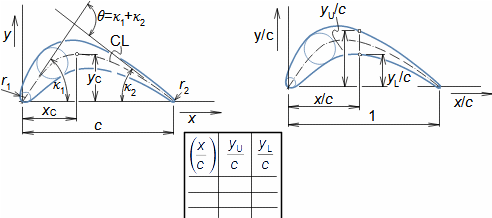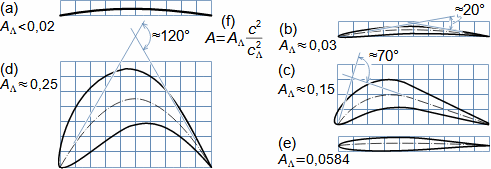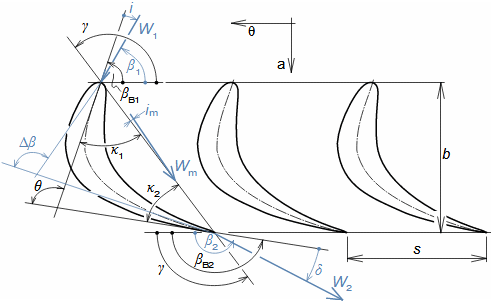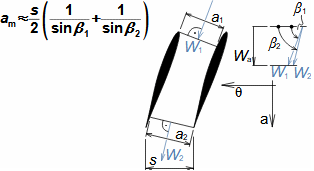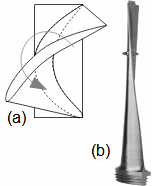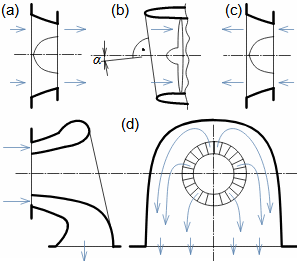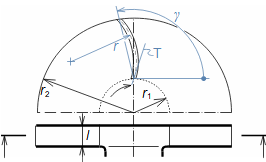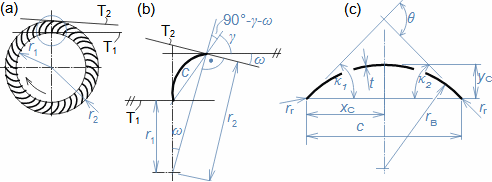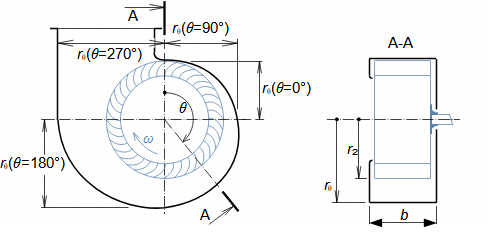Types of profile cascadesStagger angleConfuser cascadePressureless cascadeDiffuser cascadeThe type of a profile cascades is determined by the stagger angle (inclination in the cascade). The size of the inlet and outlet flow area of a cascade is essential for the resulting velocities of the working fluid when flowing through the profile cascade. Any basic type of profile cascades with the same pitch can be constructed from the same profile by simply turning the profile or changing the stagger angle of the profile in the cascade, see Figure 1:  1: Relationships between basic types of profile cascades (a) confuser cascade - also called overpressure, turbine cascades; (b) pressureless cascade - with same flow area pressure and velocity between inlet and outlet do not change; (c) diffuser cascade - also called overpressure, compressor or turbine cascades in case A1 is critical flow area. A [m2] flow area. γ [°] stagger angle of profile in cascade; s [m] pitch. The profiles are simplistically drawn as if they were made of sheet.Blade profileThe profile of the blade means its outline on a particular section. This chapter describes the methods for creating the blade profile drawing and the rules for determining the shape of the blade profile. Profile drawingProfile coordinatesCamber lineChordThe blade profile can be recorded using blade profile geometry rules. The choice of the method of recording the blade profile shape depends on the medium of this recording, or the most suitable method in relation to the required form of production documentation. Currently, graphical output (using vector graphics) is sufficient, e.g. in CAD systems, as machine tools and computing software are able to work directly with such output, but other forms of blade profile notation exist. For example, they are written in tabular form in the x; y coordinates and using the shape of the camber line of the profile, see Figure 2. |
